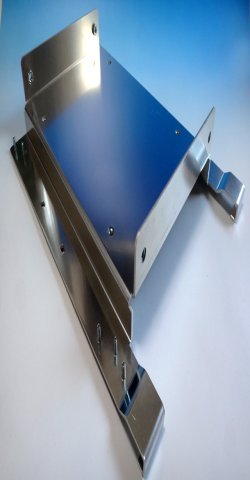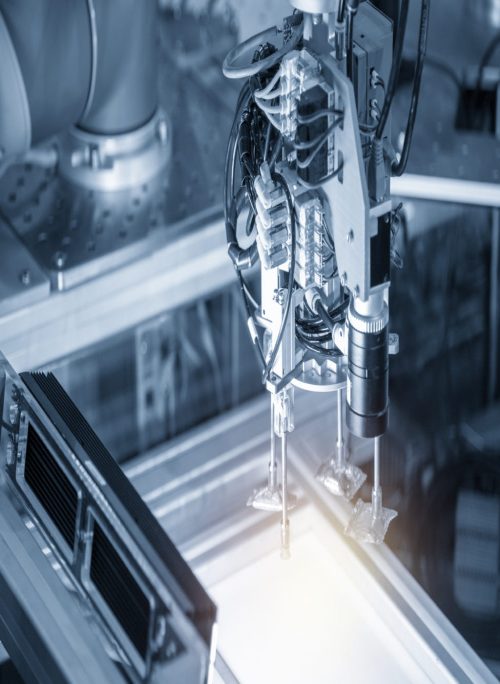Precision sheet metal processing



This is a process that mainly involves cutting out and bending thin sheet metal materials.
It is often used to make parts such as covers and brackets that do not require precision or strength.
We specialize in precision sheet metal processing, specializing in high-mix, low-volume production.
Laser-cut machine

This is a process in which the material is cut out using laser light. Very fast processing is possible.
You can instantly create processing data from CAD data such as DXF.
Since it uses a laser beam, it is not good at cutting aluminum materials with a highly reflective surface, but recently it has become possible to cleanly cut through objects up to about 5 mm.
Some roughness remains on the cut section.
Turret punch press

This is a process in which the material is hollowed out at high speed using a punch die.
It depends on the shape, but it is especially effective in laser cutting, which takes time to process holes.
By gradually shifting the position and cutting at high speed, it is also possible to process straight lines or desired curves.
Progress is being made in creating processes that combine turret punching and laser cutting to improve productivity.
A slight plucking mark remains on the cut section, and a subtle difference in level called a punching mark occurs at the joint between the molds.
Water jet
This is a process in which a stream of water is ejected under high pressure to hollow out the material. It is effective for processing materials that cannot be processed by laser cutting or turret punching (thin plates with a thickness of less than 0.5 mm, resin, wood, etc.).
Press brake
This machine can bend sheet metal parts.
The standard is 90° bending, but acute or obtuse angle bending is also possible.
It is also possible to hemm the opening of containers, etc. by folding them to make them double.
Basically, the inner radius of the bend is optional, but if there is a specification, whether or not it can be accommodated will be determined based on the mold you have.
The thickness of the board that can be bent depends on the material and shape, so please contact us as appropriate.
Roll bending
This process mainly uses a machine called a three-roll machine to bend sheet metal material into a large radius shape.
Slanted hopper shapes are also possible.
Some straight parts may be required.
The possibility of bending is determined by the plate thickness, width, and shape, so please contact us as appropriate.
Press
This is a process in which a mold is created and pressed against the sheet metal material using a press machine to form the material.
Although it costs money to make a mold, it is a processing method suitable for mass production.
It is divided into single press processing and progressive press processing.
Compatibility, manufacturing methods, and mold specifications vary depending on shape, material, and plate thickness.
Spinning
The shape is created by pressing a thin plate against a rotating mold and handling it with a spatula along the mold. It is possible to create shapes ranging from straight shapes like cylinders to shapes with arbitrary curves like reflectors.
Compared to press processing, mold costs are also lower.
We also manufacture parts using various sheet metal processing methods.
Please feel free to contact us.